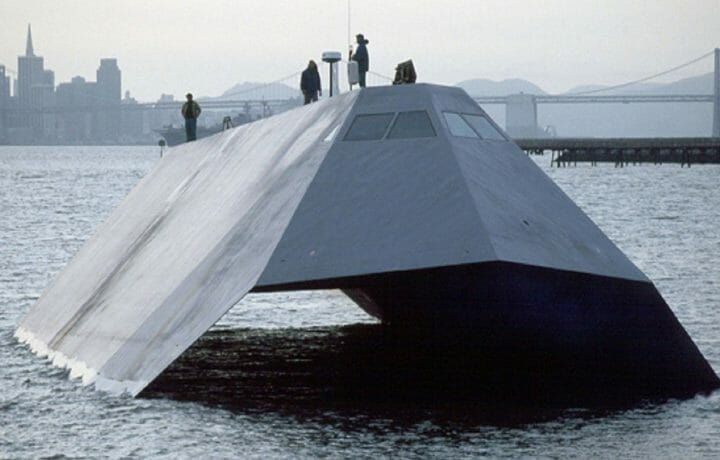Retirement didn’t look good to John Douglas Charlton, an engineer at a prime defense contractor. According to court records, he was pushed into early retirement in 1989, after eight years with his employer. The retirement package apparently was not generous enough for Charlton. So, on his way out the door, as many an unscrupulous insider does, he took with him several classified documents. The documents were the plans for two sensitive U.S. Navy projects.
No one noticed.
When Charlton departed in 1989 he had the Navy plans for the “Sea Shadow” which was focused on Navy stealth technology and the “Captor Project” which focused on naval mines that release anti-submarine mines.
He sat on them. Then between July and September 1993, Charlton met with an undercover FBI Special Agent posing as a French government official five times, trying to sell the classified materials he had in his possession for $100,000. No deal was ever consummated.
Both interestingly and inexplicably, a substantial amount of time passed and then on May 25, 1995, more than a year and a half after the last documented attempt to sell the classified material, Charlton is arrested. During the search of his home in Lancaster, CA, the FBI uncovered the classified documents he had attempted to sell and a large cache of illegal weapons.
While the retirement package may not have been as generous as he had anticipated, he was not alone in his hardship. Assistant U.S. Attorney George Newhouse commented in 1994, “There are a countless number of aerospace engineers languishing in Southern California whose heads are filled with classified information, these are men and women who might be angry, disgruntled and or just outright desperate.” The indictment of Charlton was meant to send a strong message to those engineers who might be contemplating the same path to augment their retirement which Charlton chose.
In October 1995 a plea agreement was reached, with Charlton admitting to attempting to sell the Captor Project (thus keeping the Sea Shadow project out of the court documents) to an individual he thought was a French official.
On this date, April 8, 1996, Charlton was sentenced to two years imprisonment, fined $50,000. The prosecutor noted, “The documents would have enabled any nation to discover some of the workings of the program” (referencing the Captor project).
Taking a look back one may surmise the insider threat programs of 1989 within the National Industrial Security Programs weren’t as robust as they are in 2021, right?
Maybe, maybe not.
You would not be alone to see the parallels between Charlton’s efforts to sell Naval secrets in 1993 and those of Jonathan and Diana Toebbe, who attempted to sell Naval nuclear energy secrets in 2021. Both thought they were dealing with representatives of a foreign entity – Charlton, France, and Toebbe, Brazil. Both were in reality meeting with undercover FBI special agents – in person in Charlton’s case and impersonally in the Toebbe case. And both were arrested and eventually entered plea agreements.
In the Toebbe case we now know that the government of Brazil contacted the U.S. government and provided to the FBI not only the initial package Toebbe had provided but also supported the sting operation by making a “signal” at the Embassy in Washington D.C. In Charlton’s case, we are left to our own devices to deduce how the FBI became aware of Charlton’s interest in selling sensitive U.S. Navy secrets to France.
Perhaps more importantly, from an insider risk management perspective: both Charlton and Toebbe walked out the front door with their secrets.
About the Sea Shadow The Sea Shadow was an experimental ship, invented by DARPA and built by Lockheed Martin in 1984 at a cost of close to $195 million. It remained under wraps until 1993 when the Navy confirmed its existence. The ship served its purpose as was dismantled by Bay Ship in 2012. For those trying to picture the vessel, imagine the ship in the 1997 Bond film “Tomorrow Never Dies,” the antagonist Elliot Carver’s ship was modeled after the Sea Shadow.



